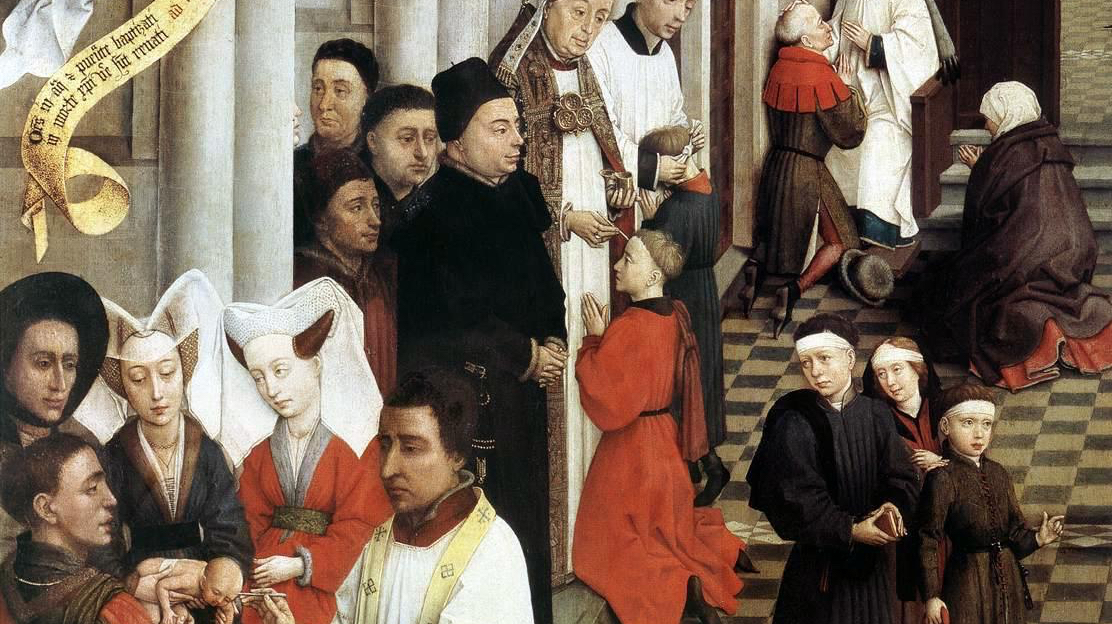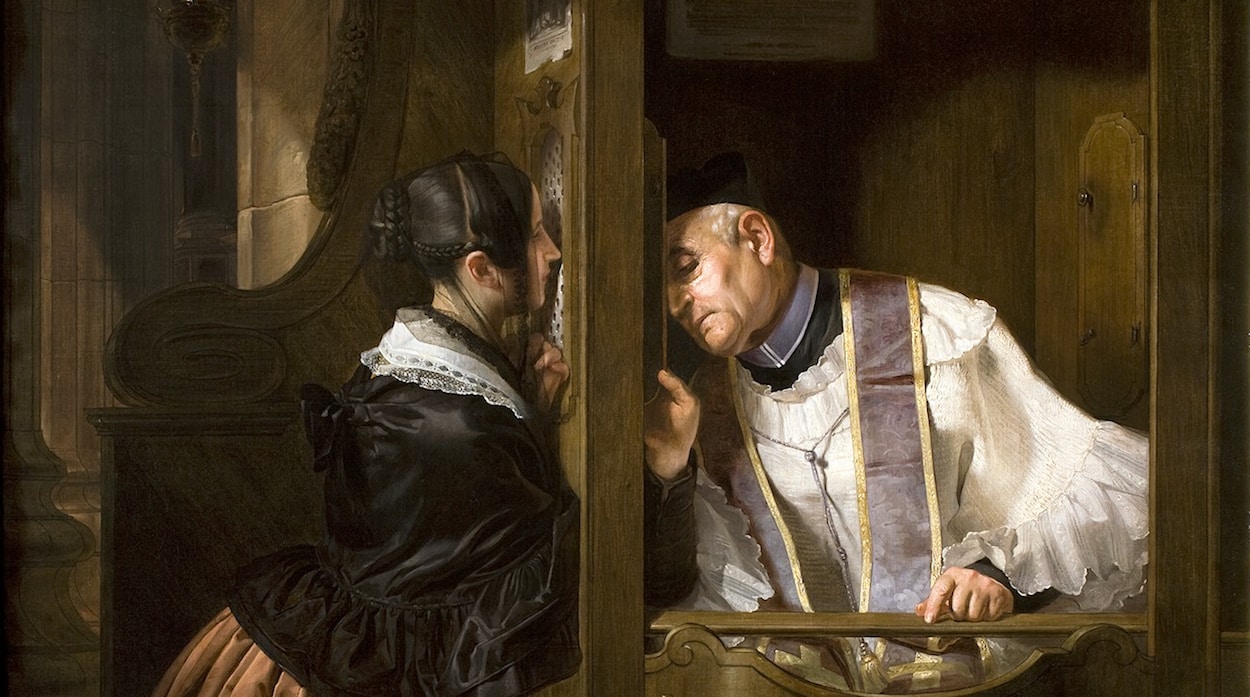In his book, Jesus Shock, Professor Peter Kreeft declared: “Protestants believe that the sacraments are like ladders that God gave to us by which we can climb up to Him. Catholics believe that they are like ladders that God gave to Himself by which He climbs down to us.”
As “outward signs instituted by Christ to give grace,” the sacraments may be categorized as follows: Initiation (Baptism, Confirmation, and Eucharist); Healing (Reconciliation and Anointing of the Sick); and Commitment (Holy Orders and Marriage). Additionally, each has two unique characteristics: a specific material or gesture (matter) used in the sacramental rite and the words used or significance expressed (form).
For Baptism, matter is the natural water that is poured on the head of the person or water in which a person may be immersed. The form is “I baptize you in the name of the Father, and of the Son, and of the Holy Spirit. Amen.”
For Confirmation, matter is the imposition of hands and anointing with chrism. The form is “Be sealed with the Gift of the Holy Spirit.”
For Eucharist, matter is wheat bread and natural grape wine. The form is the Institution Narrative spoken by the priest that recalls the words and actions of Jesus at the Last Supper.
At the time he was betrayed and entered willingly into his Passion, he took bread and, giving thanks, broke it, and gave it to his disciples, saying: TAKE THIS, ALL OF YOU, AND EAT OF IT, FOR THIS IS MY BODY WHICH WILL BE GIVEN UP FOR YOU. In a similar way, when supper was ended, he took the chalice and, once more giving thanks, he gave it to his disciples, saying: TAKE THIS, ALL OF YOU, AND DRINK FROM IT: FOR THIS IS THE CHALICE OF MY BLOOD, THE BLOOD OF THE NEW AND ETERNAL COVENANT, WHICH WILL BE POURED OUT FOR YOU AND FOR MANY FOR THE FORGIVENESS OF SINS. DO THIS IN MEMORY OF ME.
For Reconciliation, matter is understood as remote and proximate. The remote matter consists of sins committed after baptism, which have not been previously confessed whereas the proximate matter consists of contrition, confession, and penance. The form is “God the Father of mercies, through the death and resurrection of his Son, has reconciled the world to himself and sent the Holy Spirit among us for the forgiveness of sins; through the ministry of the Church may God give you pardon and peace. And I absolve you from your sins in the name of the Father, and of the Son, and of the Holy Spirit.”
For the Anointing of the Sick, matter is anointing with the Oil of the Sick. The form is “Through this holy anointing may the Lord in his love and mercy help you with the grace of the Holy Spirit. May the Lord who frees you from sin, save you, and raise you up.”
For Holy Orders, matter is the imposition of hands whereas the form requires adherence to the prayer of consecration for each order (bishop, priest, or deacon).
For Marriage, matter and form involve the free exchange of consent between the bride and groom. In the United States, couples speak these words to one another: “I (name) take you (name) to be my wife/husband. I promise to be true to you in good times and in bad, in sickness and in health. I will love you and honor you all the days of my life.”







